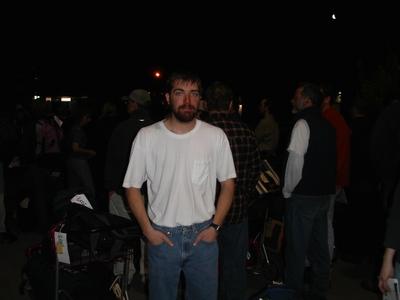
|
|
10 February, 2003
Sean's Trip Recollection Thingy
Introduction: I have just spent the last six weeks with a wonderful group of individuals. Many of you have read my interpretations and reflections of Antarctica in this journal. I though it would be nice to hear from some other people I have had the genuine pleasure to work with here on the Ice. Today’s entry comes from Sean Birkel, a Maine native who is a graduate student at the University of Maine in Orono. I would also mention that following this trip, Sean will spend another two weeks in New Zealand working with a well-known glaciologist, George Denton.
Sean's Trip Recollection Thingy – by Sean Birkel
Being in such a special place -- a polar desert, pristine and remote, with relict landscapes preserved for millions of years -- gives one a tremendous feeling of unity with nature. The Dry Valleys are, in a word, "spectacular," and they indeed are among the most beautiful, rugged, and seemingly alien places on the planet. I am grateful to have been given the opportunity to parcticipate in this expedition and I have no doubt that I will often reflect back upon our many experiences.
Mary Ann has done a wonderful job documenting life in the field, and what the group has accomplished since the end of December. She's asked that we each write about noteworthy personal experiences. One of my fond memories is of our flight aboard the LC-130 from Christchurch to McMurdo. Shortly after takeoff, the crewmen let us walk onto the flight deck to check out the commanding view. I was dazzled by the white-capped Southern Alps rising from the surrounding green plains, and the wide expanse of deep blue ocean in front of us. I recall looking down and seeing the navigator plotting our flight path on a plain white and black map. It showed New Zealand at the bottom, and Antarctica above. A small line had already been drawn.
Unsophisticated and simple, a sheet of paper, a pencil, and a protractor is what the navigator was using to help guide us to the 'bottom of the world.' It was that moment that I 'suddenly' realized that we were on our way to the most remote and virtually unexplored expanse of land left on Earth. It's hard to describe the feeling -- I was both scared and excited. In a way, I wanted to go home and cling to the safety of everything and everyone I had ever known, but at the same time I was eager to explore this new place.
Another vivid memory I have of the flight is when we first got within sight of the continent. I was told by a long-time Antarctic researcher to start looking out the window after about five hours -- that is when the mountains of Victoria Land first come into view. It was largely overcast, but there were breaks in the clouds where the jagged peaks of the Transantarctic Mountains could be seen rising above the edge of the East Antarctic Ice Sheet. A vastness of white punctuated by shards of barren rock. The nunataks of Victoria Land are indeed breathtaking. I'll never forget those first glimpses of the frozen continent. And as I sit here now at McMurdo Station, in Crary Lab at a computer with a window seat overlooking McMurdo Sound, and the Royal Society Range, I still find it hard to describe my feelings. After having been in the field for five weeks working on five Antarctic Lakes in Taylor, Pearse, and Wright Valleys, and having climbed Mt. J.J. Thompson, and Friis Hills, it now seems like a dream. This truly is a beautiful place, and I hope to visit it again some day.

Sean at the Clothing Distribution Center when we arrived back in New Zealand last night.

Sean in Taylor Valley with Lake Bonney in the background.
Contact the TEA in the field at
.
If you cannot connect through your browser, copy the
TEA's e-mail address in the "To:" line of
your favorite e-mail package.
|
